What is the location and parts of Uterus?
Location: Uterus is a fibromuscular organ located in the lesser pelvis between urinary bladder in front and rectum behind. It is pear-shaped.
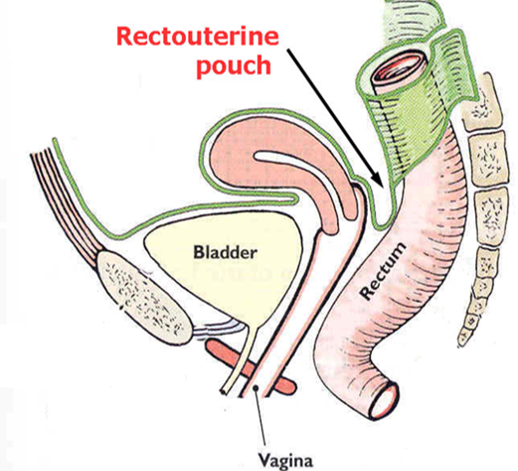 Size in adult nulliparous female:
Size in adult nulliparous female:
- Length: 7.5cm
- Width – 5 cm.
- Thickness – 2.5 cm
Parts
Uterus is subdivided into the following three parts:
- Fundus: is the part above the openings of the uterine tubes (superolateral part of uterus where the uterine tube opens is called cornu).
- Body: Upper 2/3rd of the organ below the fundus
- Cervix: lower 1/3rd of the organ separated from the body by a constricted part (isthmus).
- Cervix is divided into two parts:
- Supravaginal part: upper half
- Vaginal part: lower half projecting into the vagina (is surrounded by vaginal fornices)
- Cervix is divided into two parts:
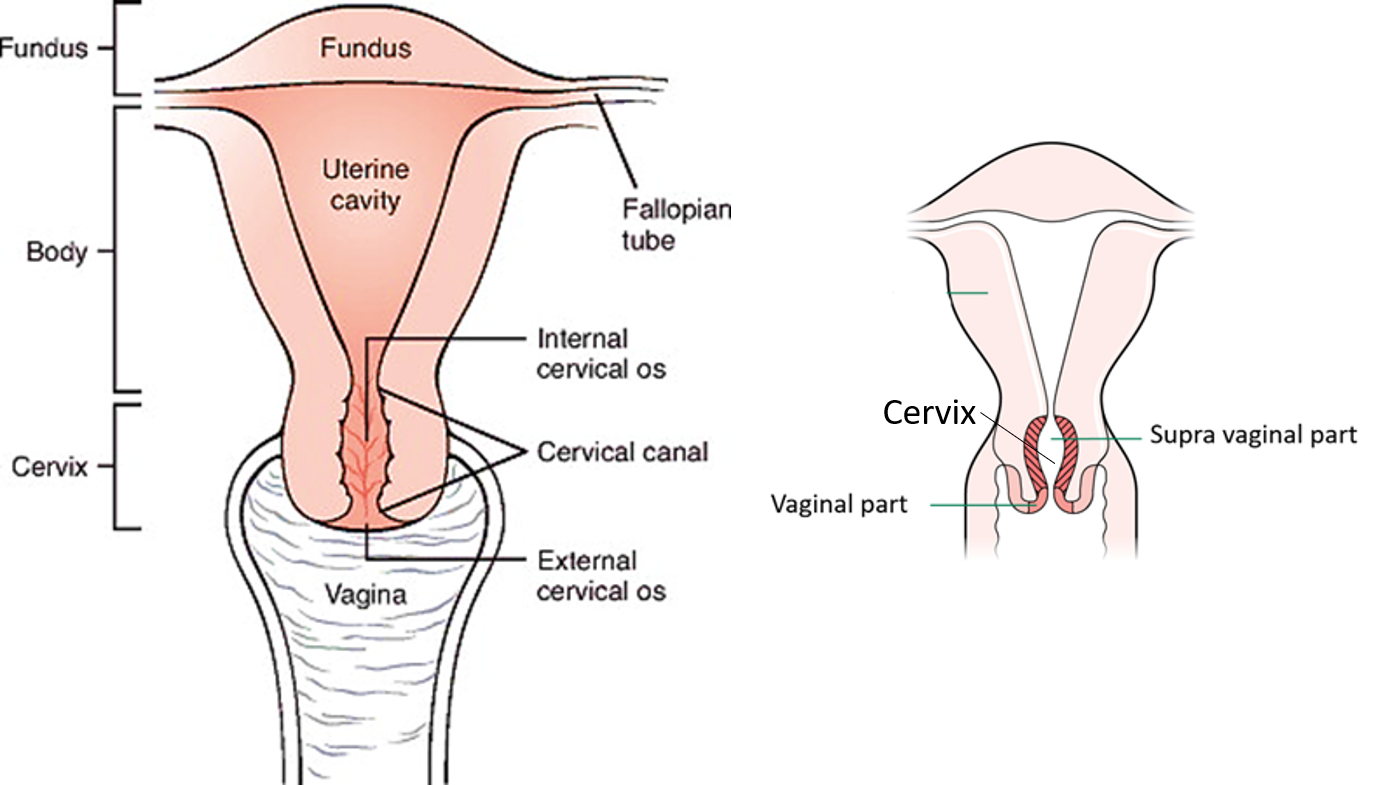
Describe the gross features of Uterus?
Surfaces and borders: It has two surfaces and two borders:
- Anteroinferior surface (vesical) surface.
- Posterosuperior (intestinal) surface
- Right and left borders.
Uterine cavity:
- Is triangular in shape in coronal section.
- In sagittal plane it is merely a slit.
- The cavity communicates with the cervical canal via internal os.
- The cervical canal opens into vagina via external os.
What are the relations of Uterus?
Relations of the body of uterus:
- Antero-inferior surface:
- Uterovesical pouch
- Superior surface of urinary bladder
- Posterosuperior surface:
- Rectouterine pouch
- Sigmoid colon
- Loops of small intestine
Relations of supra-vaginal part of cervix
- Anteriorly: posterior surface of urinary bladder.
- Posteriorly: rectouterine pouch with coils of ileum/ sigmoid colon within it.
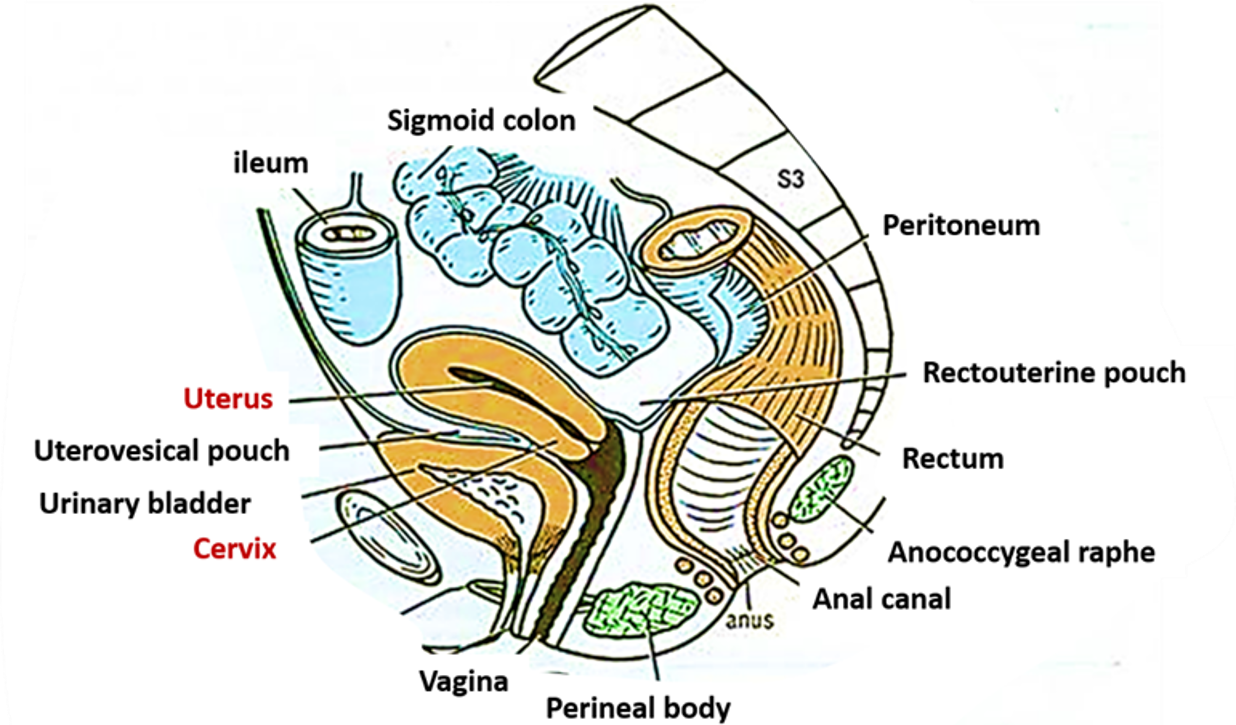
Name the ligaments attached to Uterus.
Ligaments attached to uterus are:
- Broad ligament (fold of peritoneum extending from lateral border of uterus to the lateral pelvic wall).
- Ligament of the ovary: attached to uterus below and behind the uterine tube.
- Round ligament of uterus: attached below and in front of the uterine tube.

Describe the position of Uterus.
. The normal uterus is anteverted and anteflexed.
- Angle of anteversion: The uterus is bent forwards at right angle to the vagina. The angle between the long axis of cervix and the long axis of vagina is called the angle of anteversion(90°).
- Angle of anteflexion: The body of uterus is slightly bent forwards on the cervix and the angle between the long axis of body of uterus and the long axis of cervix is known as angle of anteflexion (125°).
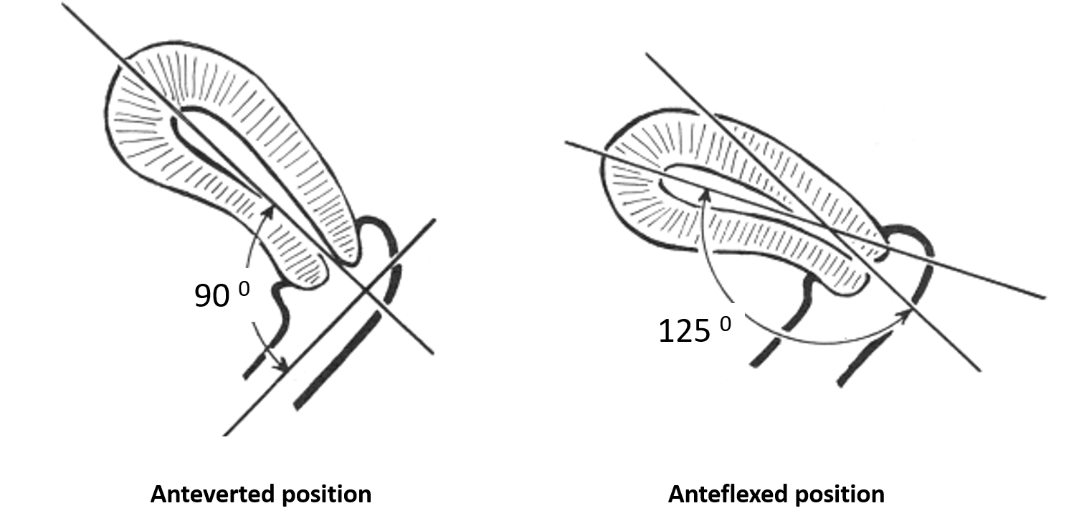
Applied Aspects
Retroverted and retroflexed uterus
Uterus is retroverted if the uterus is bent backwards on vagina. Retroversion predisposes to prolapse of uterus.
If the uterine body is bent backwards on the cervix, it is said to be retroflexed, which may cause painful menstruation.
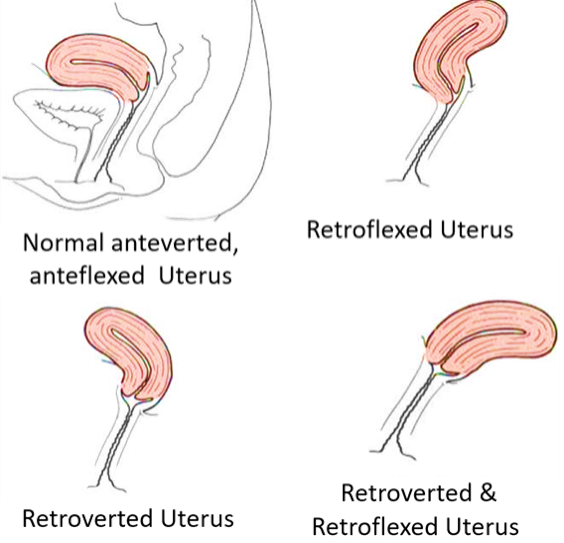
What are the parts of broad ligament?
Broad ligament is subdivided into following 3 parts:
- Mesosalpinx: is between the fallopian tube and the ligament of the ovary.
- Mesometrium: it extends laterally to the pelvic walls from the lateral border of the body of uterus.
- Mesovarium: It’s the fold of posterior (or upper) layer of broad ligament extending to the ovary to be connected with that. It is located just below and behind the ampullary part of the uterine tube.
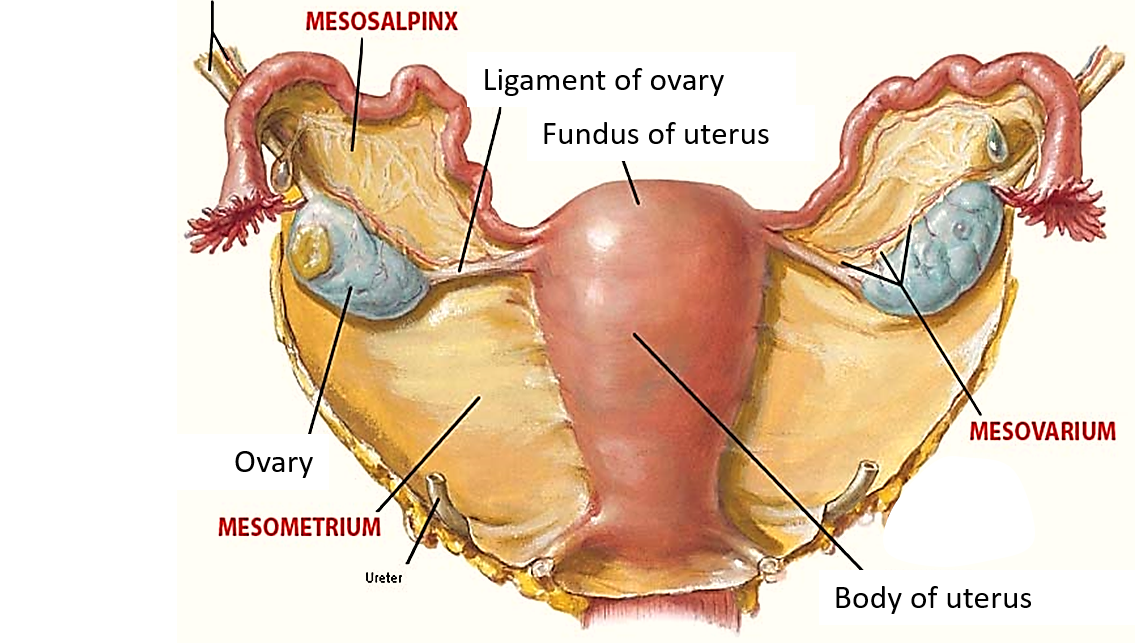
Contents of broad ligament:
- Two tubes: Fallopian tube and ureter
- Two ligaments: ligament of ovary & round ligament of uterus.
- Two arteries: Uterine and Ovarian arteries
- Two embryological remnants: epoophoron & paraoophoron ( remnants of mesonephric tubules).
- Connective tissue (parametrium)
- Lymphatics
- Nerve plexus
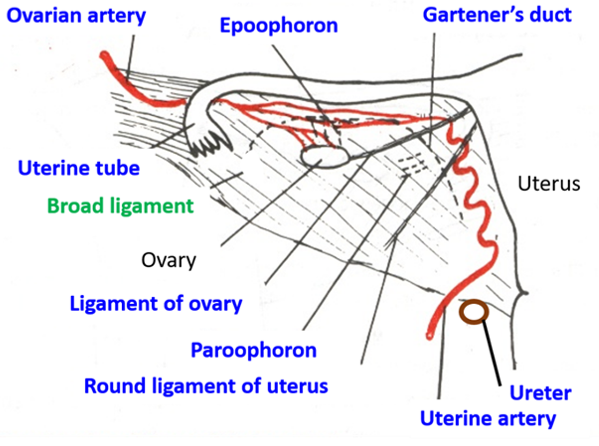
Name the true and false ligaments of Uterus.
True ligaments of uterus:
- Transverse cervical ligaments/Mackenrodt’s ligaments/Cardinal ligaments – fan-shaped ligament, extending from the sides of the cervix and lateral fornix of uterus to the lateral pelvic wall.
- Uterosacral ligaments – from body of uterus and cervix to sacrum.
- Pubocervical ligament: from cervix to the body of pubis.
- Round ligament of uterus – from anteroinferior part of the cornu of uterus to labia majora.
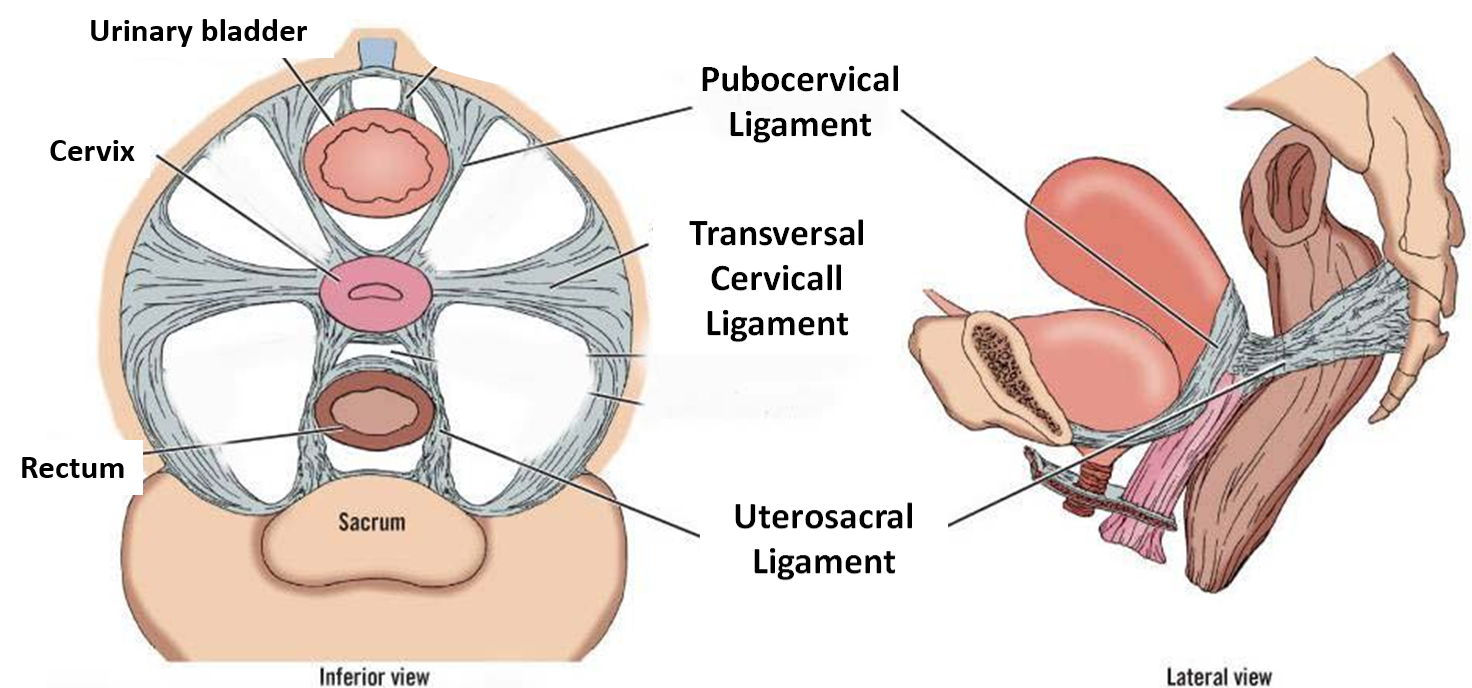
False ligaments of the uterus: formed by peritoneal folds
- Broad ligaments
- Uterovesical folds
- Rectouterine folds
What are the supports of Uterus?
Following factors support the uterus by maintaining the normal position of uterus.
Primary Supports
- Muscular/active supports
- Pelvic diaphragm formed by levator ani muscles – resists the increase in intraabdominal pressure and cradles the uterus from below.
- Perineal body: provides support to uterus by maintaining the integrity of the pelvic diaphragm.
- Ligaments and mechanical support
- True ligaments of the uterus – pubocervical, lateral cervical and uterosacral- the ligaments pass from cervix in three directions and fix it to the pelvic walls.
- Round ligament of uterus– forward pull of this ligament along with uterosacral ligament helps in maintaining anteflexed and anteverted position of uterus.
- Surrounding viscera.
- Axis of uterus- the anteverted and anteflexed position of uterus.
Secondary supports
- Peritoneal folds- Broad ligament, Uterovesical and Rectoaginal folds.
Applied Aspects
Prolapse of uterus
When the uterus descends into the vagina. It results due to failure/rupture of structures (perineal body, supporting ligaments or muscles of pelvic diaphragm) that support the uterus.
Describe briefly the arterial supply of Uterus.
Uterine artery (main supply)
- Is a branch of internal iliac artery.
- It passes medially on the floor of the pelvis along the root of the broad ligament crossing the ureter ( ureter lies below the artery), about 2 cm lateral to the cervix.
- Then it ascends along the side of the uterus in a tortuous course between the 2 layers of the broad ligament.
- Turns laterally below the uterine tube to end by anastomosis with ovarian artery, which also assists in supplying the uterus.
- It supplies: uterus + medial ¾ of Fallopian tube + vagina
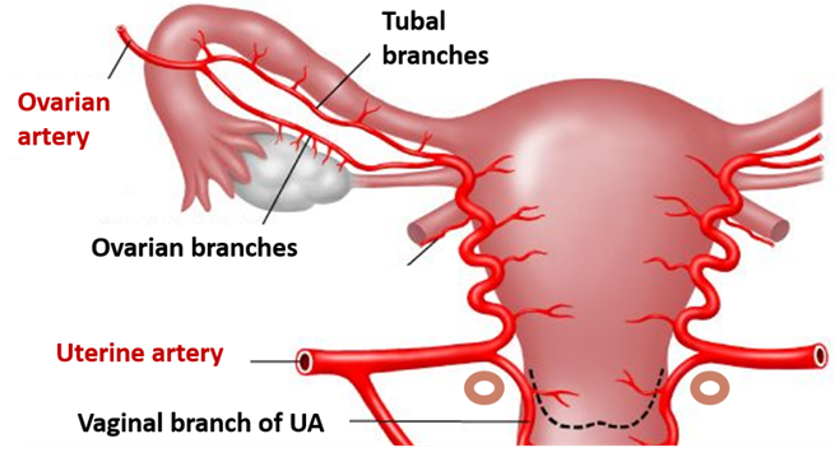
Ovarian artery – a branch of abdominal aorta (arises at L2 level)
Describe briefly the lymphatic drainage of Uterus.
- From the fundus and upper part of the body the lymph drains into pre-aortic and para-aortic lymph nodes (following ovarian vessels)
- Superolateral part of uterus ( near opening of uterine tube) drains into superficial inguinal lymph nodes (along the round ligament of uterus)
- From the lower part of the body the lymph drains into external iliac lymph nodes.
- Upper part of the cervix drains into external iliac lymph nodes
- Lower part of cervix drains into the internal iliac lymph nodes.
- Lymph from the posterior wall of cervix drains into the sacral lymph nodes
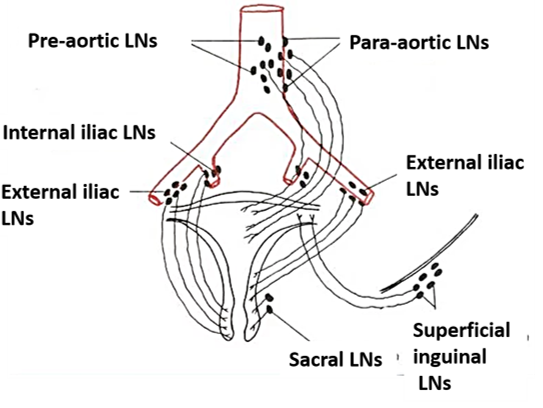
Applied Aspects
Cancer of cervix
It is the commonest type of cancer in women. It spreads widely along the lymphatic drainage.

Amazing site of anatomy learning